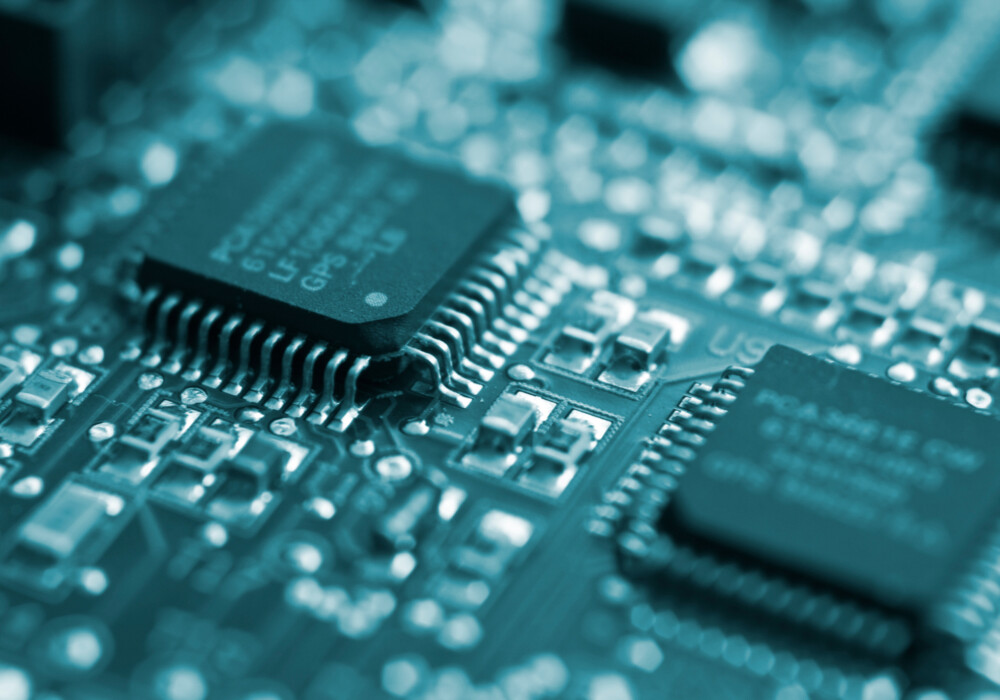
Think of a microchip as the brain that powers our digital world. Inside your smartphone, there’s a chip smaller than your thumbnail that’s more powerful than all the computers used to send humans to the Moon. Let’s explore how these tiny marvels shape our world.
From Vacuum Tubes to Silicon: In 1946, the first computer (ENIAC) used 17,468 vacuum tubes and filled a large room. Today, Apple’s M2 chip packs 20 billion transistors into an area the size of a postage stamp. This incredible miniaturization powers everything from smartwatches to self-driving cars.
Silicon: The Perfect Element: Why silicon? It’s the second most abundant element in Earth’s crust (after oxygen), making it cost-effective. More importantly, silicon is a semiconductor, meaning we can precisely control its electrical properties. Think of it like a light switch that can be turned on and off billions of times per second.
The manufacturing process is like building a city with streets thousands of times thinner than a human hair. Here’s how it works:
Starting Material: Manufacturers begin with pure silicon - 99.9999999% pure. For comparison, if tap water were this pure, you’d have to wait 27,000 years to see a single impurity.
Photolithography: Using extremely focused light (like a super-precise stencil), manufacturers “print” circuits onto silicon. The newest machines, costing $150 million each, use light waves just 13.5 nanometers long - about 4,000 times thinner than a human hair.
Modern microchips enable innovations we use daily:
Healthcare: Moderna used AI-powered chips to design their COVID-19 vaccine in just 2 days. Modern pacemakers, smaller than a coin, run for years on tiny batteries thanks to efficient chip design.
Communication: The latest 5G phones can download entire movies in seconds because of specialized communication chips. The Apple A16 chip in iPhone 14 can perform 17 trillion operations per second.
Transportation: Tesla’s self-driving computer processes 2,300 frames per second from multiple cameras, making split-second decisions using specialized AI chips.
The microchip industry faces several critical challenges:
Supply Chain: Taiwan produces 92% of advanced chips through TSMC. This concentration has led to global shortages affecting industries from automobiles to gaming consoles.
Environmental Impact: A single chip factory uses up to 4 million gallons of ultra-pure water daily - enough to supply a city of 50,000 people.
Future Challenges: By 2025, the world will generate 463 exabytes of data daily - equivalent to 212,765,957 DVDs - requiring even more powerful and efficient chips.
Quantum Computing: IBM’s latest quantum processor performs certain calculations 127 times faster than traditional chips. Google’s Sycamore quantum processor solved in 200 seconds a problem that would take traditional supercomputers 10,000 years.
AI Chips: NVIDIA’s H100 AI chip contains 80 billion transistors and can train large language models like ChatGPT 30 times faster than previous generations.
As we push toward atomic-scale computing, microchips continue to evolve. The latest chips use transistors just 3 nanometers wide - about 10 atoms across. For perspective, your fingernails grow about 1 nanometer every second.
The true power of microchips isn’t in their size but in their impact. From enabling remote work during global pandemics to powering the AI revolution, these tiny silicon marvels continue to reshape our world in unprecedented ways.